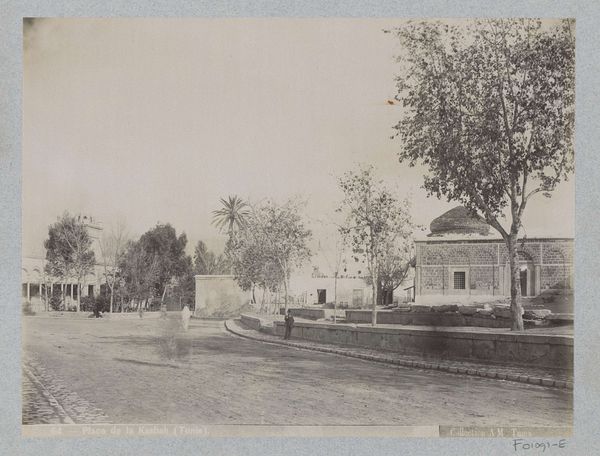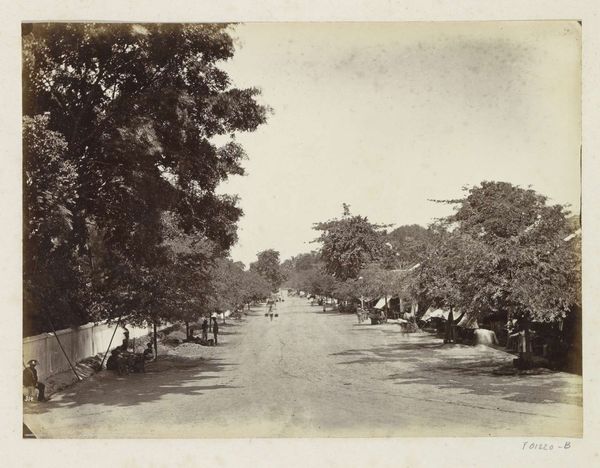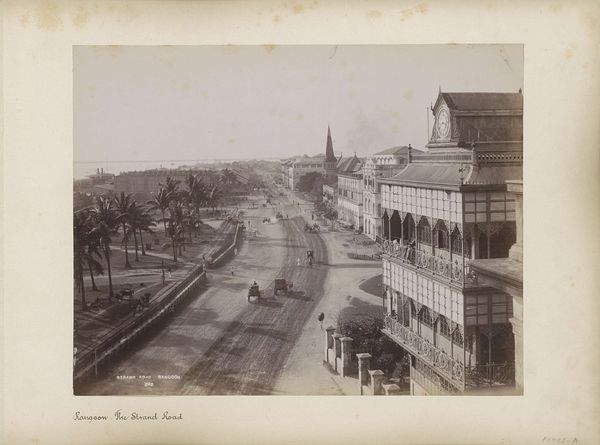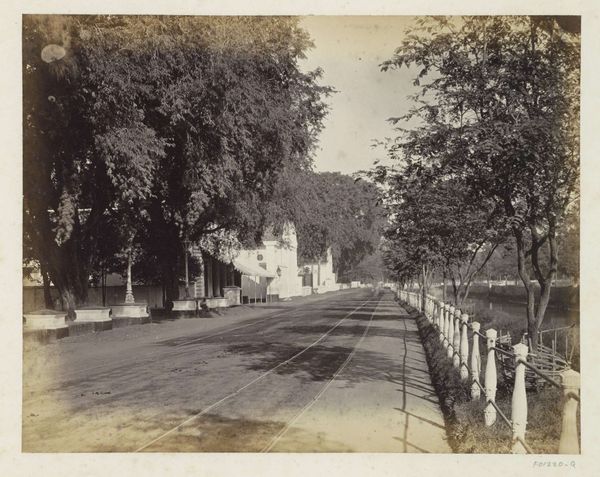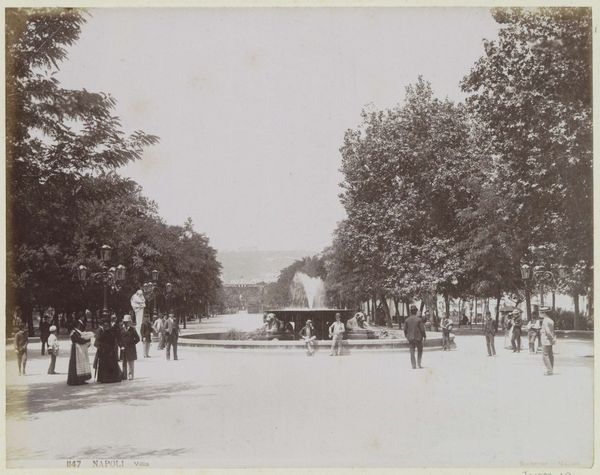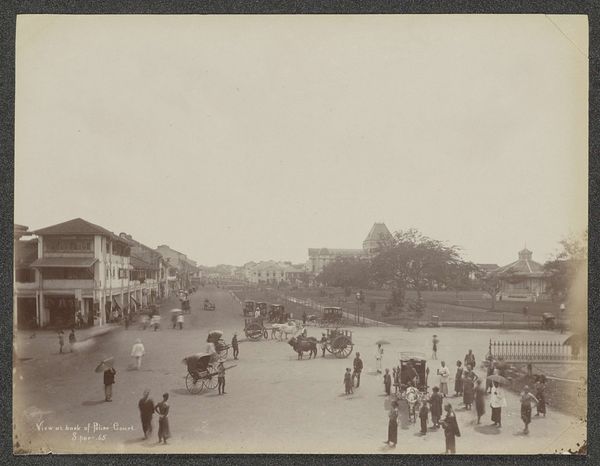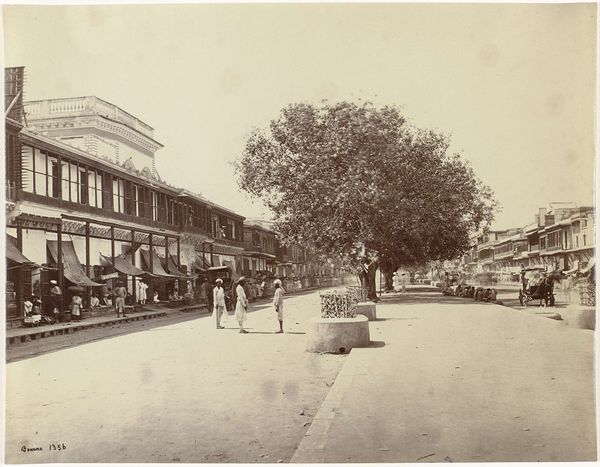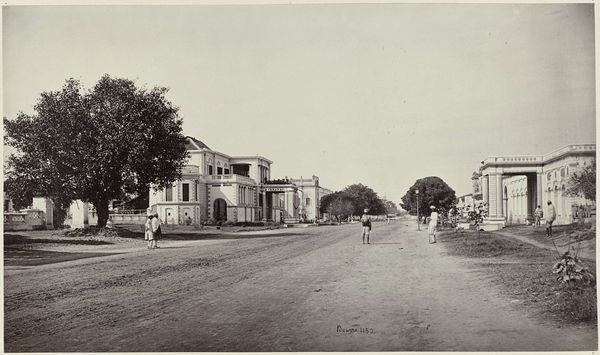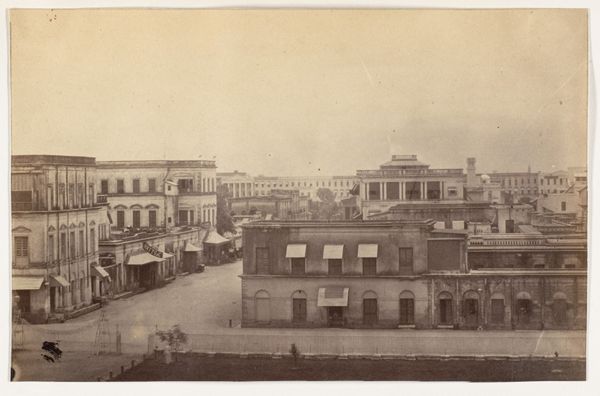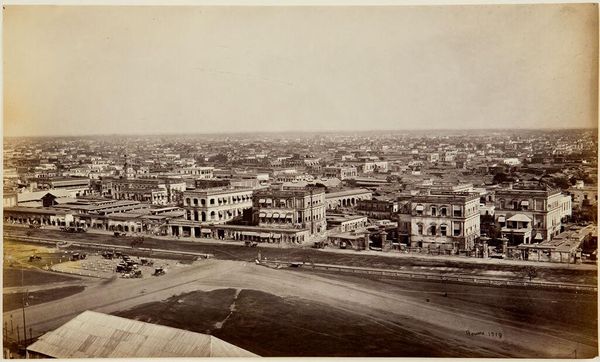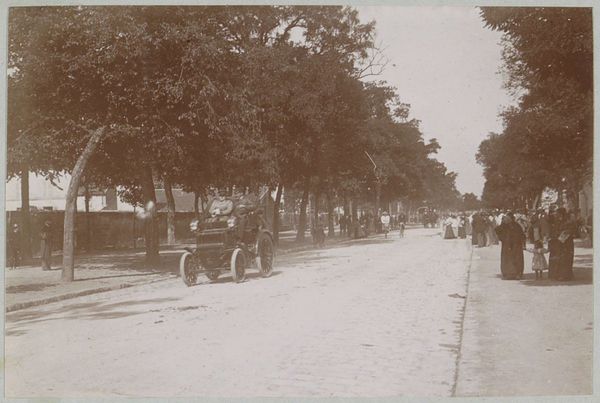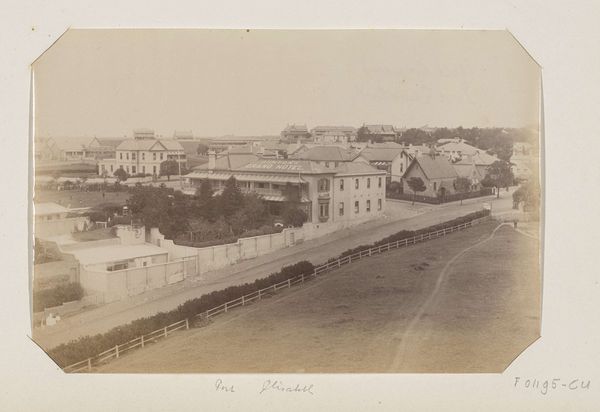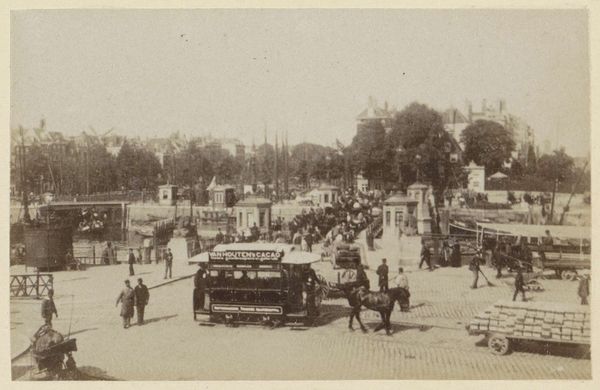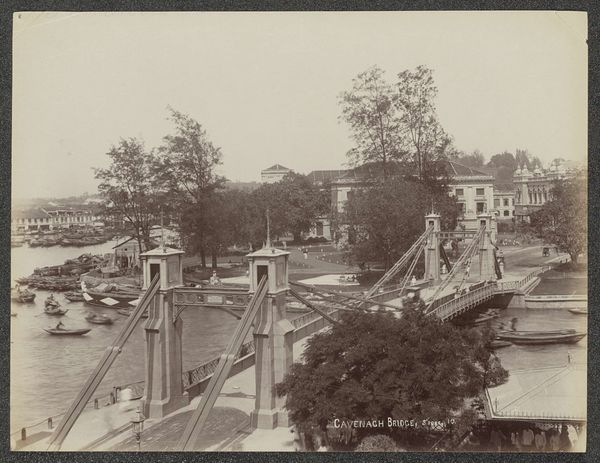
Gezicht op Qazvin met links een boulevard en rechts aan de horizon de Vrijdagmoskee c. 1880 - 1895
0:00
0:00
print, photography, albumen-print
# print
#
landscape
#
outdoor photograph
#
charcoal drawing
#
photography
#
orientalism
#
cityscape
#
islamic-art
#
albumen-print
Dimensions: height 170 mm, width 232 mm
Copyright: Rijks Museum: Open Domain
Editor: We’re looking at Antoine Sevruguin’s photograph, "Gezicht op Qazvin met links een boulevard en rechts aan de horizon de Vrijdagmoskee," taken sometime between 1880 and 1895. It’s an albumen print, sepia-toned and remarkably detailed. It feels almost dreamlike, distant. What do you see in this cityscape that speaks to its time and place? Curator: It's a fascinating record of cultural memory, isn't it? The way the photograph positions the viewer high above the boulevard, almost as if suspended, grants a powerful perspective. Note how the long avenue, lined with trees, draws your eye directly towards the Friday Mosque. That visual emphasis establishes not only physical geography but also underlines the dominance and cultural weight of religious architecture in Qazvin. Editor: The repetition of forms - the trees, the arches in the building to the right - are visually interesting, creating a sort of rhythm. Curator: Precisely! Repetition often functions as a symbolic echo across time, binding past, present, and potentially future. How do you interpret the seemingly empty boulevard? Does its emptiness signify tranquility, or something else entirely? Editor: It's intriguing, maybe an evocation of an older order before modernization began? Or a constructed image of an exotic east? Curator: Potentially both! It reflects the way Westerners viewed and consumed these photographs – constructing their own idea of the ‘Orient.’ Sevruguin's lens captured more than just physical space; he inadvertently recorded the gaze and expectations of an era. It’s a document shaped by those complex interactions. Editor: It's made me think about how every image carries multiple layers of meaning, shaped both by the subject and by the viewer. Curator: Absolutely. These historical records have immense cultural power because they capture the emotional atmosphere that shaped society's values at that time. It allows us to continue interpreting the lasting memory.
Comments
No comments
Be the first to comment and join the conversation on the ultimate creative platform.
